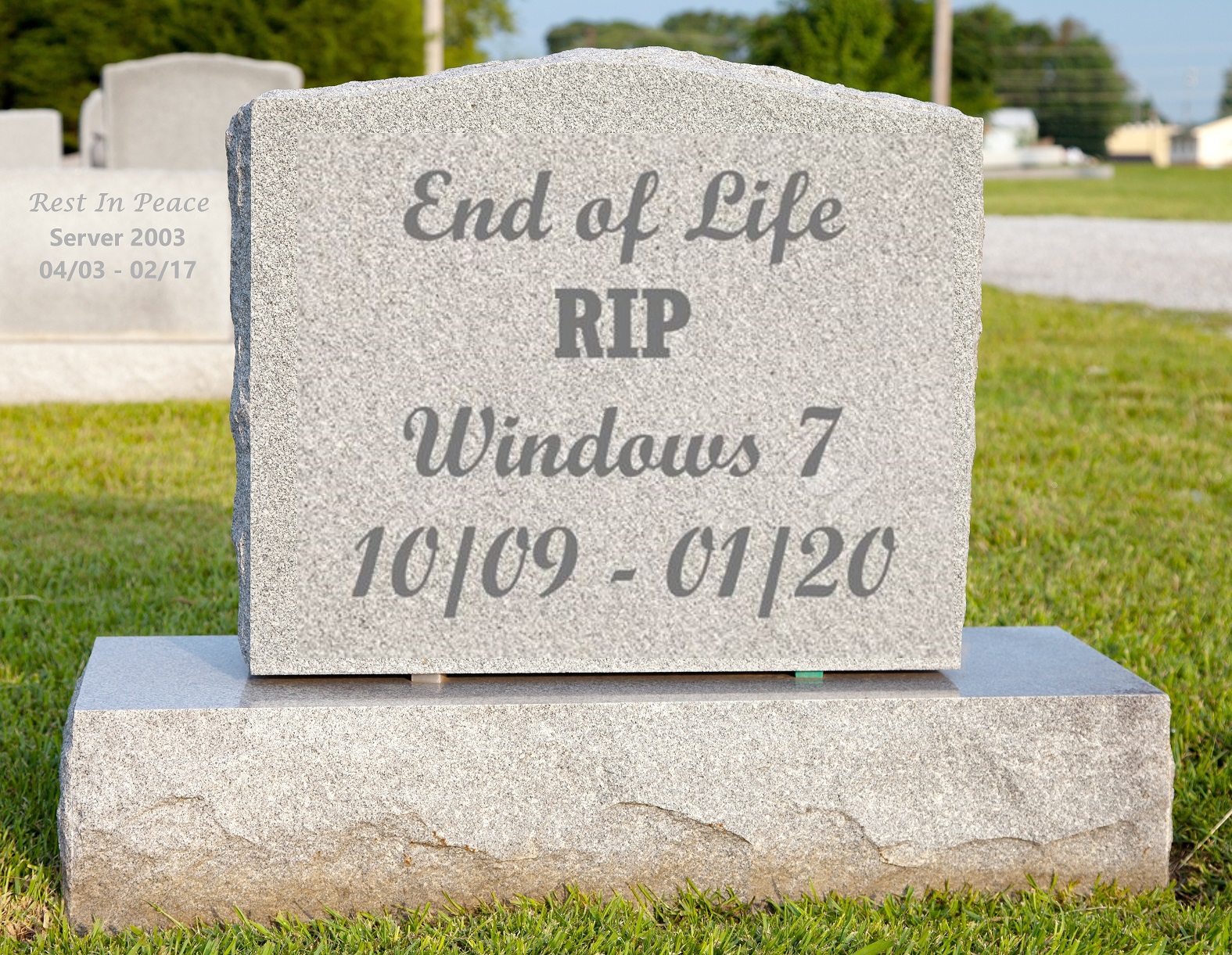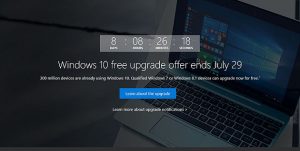We are noticing that people are dragging their feet moving to replace Windows 7 and Server 2008. According to really boring desktop OS statistics from April, Windows 10’s share only grew a small amount while Windows 7 usage barely declined.
Server 2008 and Windows 7 were shipped with 10 years of support which included monthly security updates, but that support is now ending in about 8 months. On January 14, 2020, support for Windows Server 2008 and 2008 R2 will end, unless you are willing to pay.
Microsoft gives you three options to remain current:
- Assess, Migrate, and Optimize. Work now to understand what applications are running and what their associated capacity, processing power, and memory utilization requirements are so you can plan your migration to an updated operating system.
- Migrate your server to Azure. In July of 2018, Microsoft announced that they will offer 3 years of additional support, that includes new security updates for SQL 2008 and Windows Server 2008.
- Purchase Annual Support. Microsoft is selling Extended support on an annual basis per server for up to three years. This allows you to purchase only as many licenses as you need per year with the hopes that the number decreases as you are migrating to up-to-date operating systems.
This means that unless you follow one of the three above paths, your Windows 2008 server and Windows 7 devices will no longer receive security updates for vulnerabilities that are discovered after that January. These updates are critical to keeping your data secure.
This is critical because cyber-attacks are frequently attempted by nefarious characters and we don’t have to look to far back to see why we NEED to upgrade. In fact, we have to look at May 2017. That was the release date for the WannaCry ransomware cryptoworm.
Many people had not upgraded from the older Windows XP and Windows Server 2003 operating systems and this put them at particularly high risk. The problem was that no security patches had been released since April 2014 when XP and 2003 reached their end of life.
A security vulnerability had been noted and the cyberthugs had their way with hundreds of thousands of computers in over 150 countries. Hospitals were left without computer systems as they all displayed ransom notes.
Now is the time to inventory your infrastructure to determine what workstations will need updated/replaced as you have about 7 months to begin the implementation of your plan.
A point to consider is that an upgrade to a newer OS will leave you with hardware that is probably quite old. We would suggest considering taking that money and putting it toward a server that has greater processing power and new hardware.
Before you purchase replacement hardware, it is very important to understand what the current capacity, processing power, and memory utilization levels are on your current server so you can purchase a suitable replacement.
Remember that build/ship times will drastically increase toward the end of the year. We know this because it happens at the end of every year when people are working to spend the last of budgeted dollars. Ship times can increase to 3 weeks so make your purchases early!
If/when you buy a new server, we always suggest purchasing a three-year support plan. Unless you don’t mind buying a new computer again in 14 months, Murphy’s law dictates that it is best to not take a chance of a catastrophic failure. If the purchase hurts now, it will really sting in 14 months if the motherboard fails.
The important thing is that you prepare your upgrade path now, backup your data, then execute your plan. Don’t forget the 3-2-1- Rule!
Making your plan for upgrades/replacements now will alleviate last minute pressure and allow for appropriate funding for any required hardware.
.
We at Advanced Systems Solutions have helped many organizations map out an upgrade path for their infrastructure. If you’re looking for a support company to help keep you up to date, with unmatched customer service, please contact us. We love to help!
.
Like our Facebook page by clicking on the icon at the top right of this page to stay up to date with current alerts and information!
Disclaimer: The above information is not intended as technical advice. Additional facts or future developments may affect subjects contained herein. Seek the advice of an IT Professional before acting or relying on any information in this communiqué.




